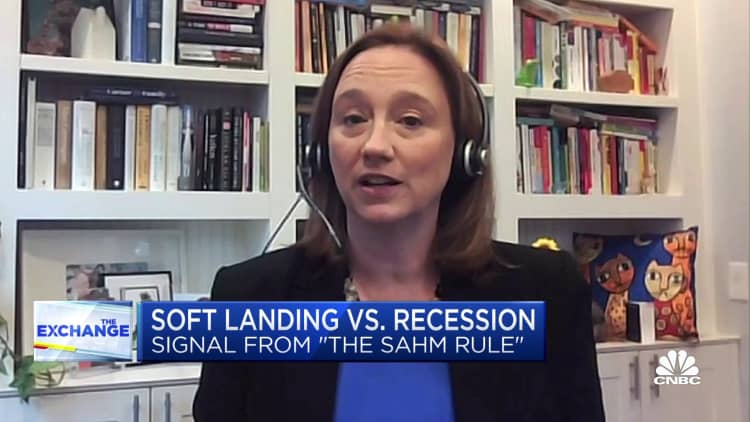Amazon workers deliver packages on Cyber Monday in New York, US, on Monday, Nov. 27, 2023.
Stephanie Keith | Bloomberg | Getty Images
At a time when the economy is supposed to be slowing, Friday’s jobs report is expected to show that employers actually picked up the hiring pace in November.
Not that there’s anything wrong with that. A growing economy is a good thing, and nothing underpins that better than a solid labor market. Economists surveyed by Dow Jones expect the Labor Department to report that nonfarm payrolls expanded by 190,000 last month, up from the 150,000 in October.
But investors and policymakers have been expecting things to slow down enough to at least allow the Federal Reserve to call an end to this cycle of interest rate hikes as inflation ebbs and the supply-demand mismatch in employment evens out.
A hot jobs report could undermine that confidence, and put a damper on what has been a buoyant mood on Wall Street.
“There’s some risk to the upside because of the returning auto workers who were on strike,” said Kathy Jones, chief fixed income strategist at the Schwab Center for Financial Research. “So it looks like a steady but slowing jobs market.”
Payroll growth has averaged 204,000 over the past three months, a solid gain though well below the 342,000 level for the same period in 2022. The unemployment rate over the past 12 months, however, has risen just 0.2 percentage point to 3.9%, elevated from where it was earlier in the year but still characteristic of a robust economy.
However, there are a number of dynamics at play in the current picture that make this week’s report, which will be released at 8:30 a.m. ET, potentially critical.
Wage growth and inflation
Probably the most important data point outside the headline numbers will be wages.
Average hourly earnings are expected to show acceleration of 0.3% from October and 4% over the 12-month period, according to Dow Jones.
The yearly average hourly earnings level is not consistent with the Fed’s 2% inflation goal, but it is off its March 2022 peak of 5.9%. Getting wage growth to a sustainable level is vital to bringing inflation down, so anything more pronounced could generate a market reaction.
“When you come down to trying to measure supply and demand, price is probably the most accurate way to look at it, and you know that wage growth has slowed considerably,” Jones said. “So it tells you supply and demand are coming back on track.”
Jobless rate as a recession indicator
Outside of wages, the headline unemployment rate could get some extra scrutiny.
Though the jobless figure has risen just incrementally from a year ago, it’s up half a percentage point from its recent low of 3.4% in April.
The difference is significant in that a time-tested indicator known as the Sahm Rule shows that when the unemployment rate rises half a point from its most recent low on a three-month average, the economy is in recession.

However, even the rule’s author, economist Claudia Sahm, said there are no guarantees that will be the case this time around, though warning signs are definitely in place.
“There is a logic to it that … once the unemployment rate starts rising, it often keeps going, and it picks up steam and it’s a feedback loop,” Sahm said recently on CNBC. “That’s why a small increase in the unemployment rate can be really bad news, because it keeps going.”
Signs of strength, and weakness
Other data this week showed some wobbles in the labor market.
Job openings hit their lowest level in 2 1/2 years, and ADP reported that private payrolls grew just incrementally. Though continuing jobless claims edged lower, they are running high.
However, workers returning from strikes in the auto industry and Hollywood could bolster the November total by as much as 38,000, according to Goldman Sachs. The firm’s economists, in fact, expect that the report will be considerably above the Wall Street estimate – for a total of 238,000 that could jangle some nerves for its potential to harden the Fed’s position.
Neil Costa, founder and CEO of recruitment marketing firm HireClix, said he’s witnessed a slowdown in job ads.
“We’ve definitely seen a cooldown happening this year,” he said. “It started in the early part of the year, and we’ve seen people pull back on their recruitment advertising dollars, without a doubt.”
However, he said pockets of the jobs market remain strong, citing health care specifically, while he has seen a slowing in transportation, logistics and manufacturing. Costa is looking for continued slowing in 2024, though nothing consistent with a deep recession.
“People are just being extremely cautious at this particular point,” he said.
Credit: Source link












